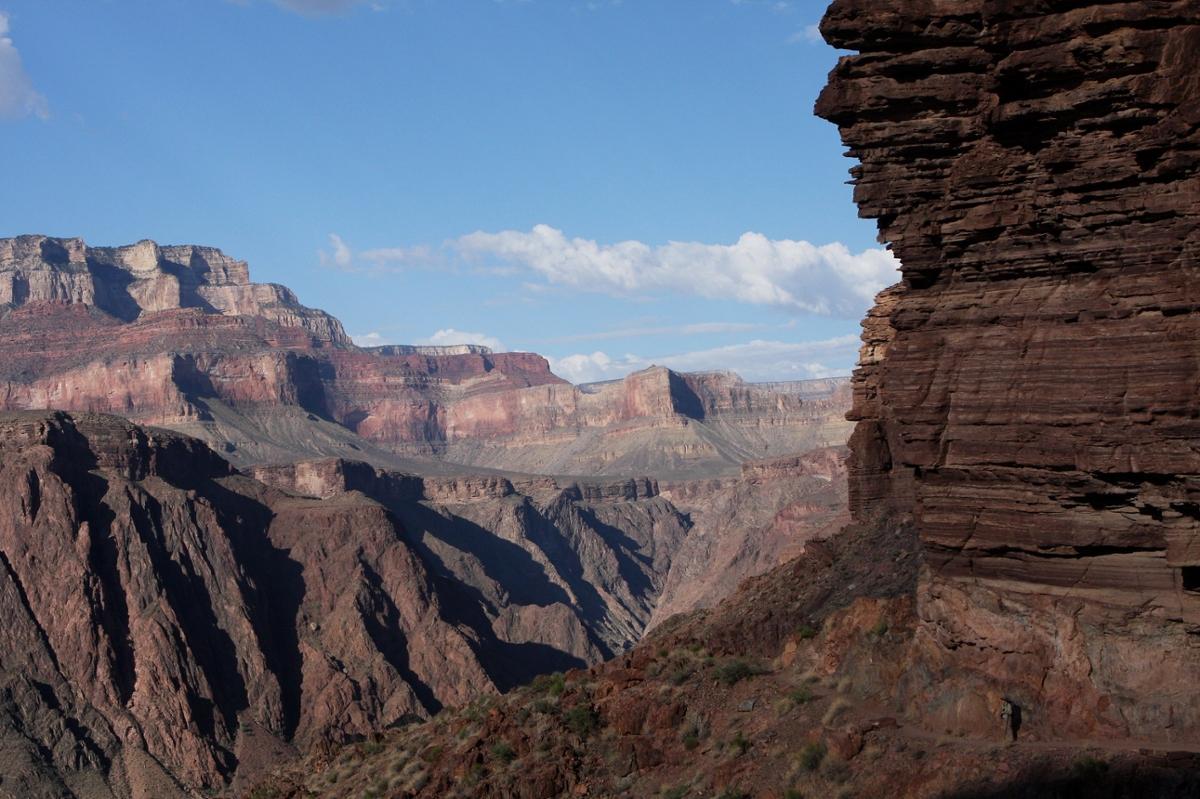The Grand Canyon doesn’t only make a pretty postcard; it’s also a record of geologic history. But it’s not a perfect timeline: below the horizontal bands we associate with the Grand Canyon, the canyon’s walls suddenly look different. The rock layers are vertical, and less colorful. Though the rocks are right next to each other, they’re from very different time periods. The rocks representing the geologic record in between are missing. Geologists call this phenomenon the Great Unconformity.
Although unconformities, or gaps in the rock record, are common, the Great Unconformity earns its title. It represents a gap of hundreds of millions to over a billion years. The rocks above the Great Unconformity are about 520 million years old, from the Cambrian period, and are full of marine life, leaves, and reptile footprints; the rocks below are about 1.4 to 1.8 billion years old, pre-Cambrian, and only have fossil bacteria.
So, what’s behind this mysterious gap? Scientists think it may have to do with the ancient supercontinent Rodinia, which broke up around 750 million years ago, in the pre-Cambrian eon. A research team used a method called thermochronology, which looks at the chemical changes resulting from heat signatures imprinted within rocks when they undergo geologic movements, to study rock samples from throughout the Grand Canyon. They found that the western and eastern parts of the canyon moved upward and eroded at different times, and theorized that the breakup of Rodinia caused these changes, resulting in the gap we know as the Great Unconformity.
It’s only fitting that the Grand Canyon would hold a grand mystery.









